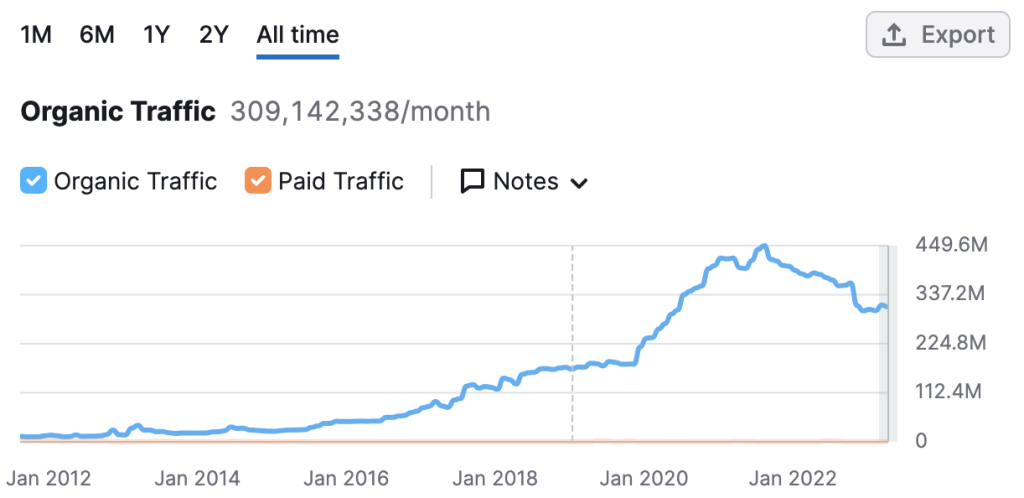What Is a SWOT Analysis?
A SWOT analysis is a strategic planning tool used by businesses to understand their strengths, weaknesses, opportunities, and threats. It helps them identify what they should focus on and where they might fall short. It could be the first step after you identify your competitors, as described in our previous article: “How to conduct competitor analysis“.
In this article, I tell you a few words about this powerful tool and how to conduct a SWOT analysis for your startup. I show you examples of strengths, weaknesses, opportunities, and threats, and finally, give you an analysis template. So, let’s start from the beginning.
When do you use SWOT?
The SWOT analysis helps you understand what strengths and weaknesses your business has, and where it might be able to improve. It will give you ideas for growth strategies, and help you identify areas where you could focus your efforts.
There are a lot of situations when this tool is suitable:
- You need to pitch your idea to your team, boss, or investor. SWOT analysis could be a great way of presenting the results of research. You can organize your information in a SWOT-like way to make your ideas simple but eye-catchable
- Your business is stuck in trouble and you need to figure out how to solve this problem. Maybe your revenue doesn’t grow or the number of leads is falling. It is time to start your investigation and SWOT analysis is a great thing
- To set a priority to your hypothesis list. Sometimes it is very hard to get a full picture of your product. Developers know everything about code and technological limitations, sales are focused on the client’s world and marketing knows what happening out of the shell. SWOT template is a way to align knowledge about your business. Your results will be deeply and more actionable if you do the analysis with your team.
SWOT
There are internal factors and external factors. Strengths and Weaknesses are living inside of your Internal environment. It means that you can control them and directly affect them. It could be your physical resources, human resources, your reputation, or your financial resources.
Opportunities and Threats are the “external environment”. You can’t handle them but it is possible to predict them or at least to calculate the risk. For example, it could be market trends or some negative factors like COVID or any other disease.
Strengths
Find out things that you are good at. The easiest way to figure out this is to as yourself the next questions:
1. What does my business do better than anyone?
2. What do my clients talk positively about us?
For example, it could be a unique product or service offering, competitive advantage, financial strength, brand recognition, customer loyalty, and industry reputation.
Weaknesses
The main challenge here is to find areas where your business is underachieving. To identify them use the questions below:
1. What could we improve in our business to boost up the growth?
2. What do my clients talk negatively about us?
In most cases, you can find this data in your sales or support team. For example, the main weakness of a startup is its lack of resources; it has little money to spend on marketing, advertising, and so forth.
Opportunities
There are a lot of things that happen outside of your organization and may bring you a positive effect. It could be a growth of your market or the pivot of your main competitor. Even bad things like COVID could be a great opportunity for some sectors of startups like E-Learning or Video Entertainment. Also, there could be changes in the laws, trends, environment, or any local or international events

Threats
It is things out of your organization too but works opposite to opportunities. If some event could affect your business negatively it should be listed here. The biggest threats to startups are competition, bad management, lack of capital, and poor timing.
SWOT analysis template
From my point of view, Miro has the best template for SWOT analysis. Moreover, it is very easy to organize the remote work of colleagues from other teams on one board at the same time. There are a lot of templates here but I recommend using this one.
Please pay attention to one important thing: this is not a simple classical SWOT template. The current template has a crossing between S, W, O & T. Here is a section for strategy in each crossing. In that case, we need to understand how would we use our strengths to get the maximum from our opportunities or how would we use our strengths to avoid threats.
These little steps could be the first brick in your strategy foundation. So don’t regret your time on it. It will save a lot of resources for you in feature.
Next steps with SWOT Analysis
The next step is to take this information and turn it into actionable insights. This means coming up with ideas for new products, services, or marketing campaigns based on what you learned from the SWOT analysis.
PS: Did you know that is possible to use SWOT Analysis not only in the business sphere but in person? For example, to boost your career growth. As homework, you could try to think about your own strengths.









